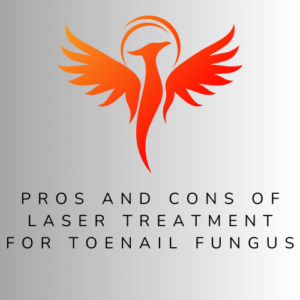The world is slowly turning into a technology-driven world. Thus there is a need to adopt the trending electronic technologies. Social media is an internet-based tool that can easily connect people remotely. Social media has found its way into Healthcare, where patients and doctors can interact and share their ideas and opinions. Social media has numerous applications in the healthcare sector and benefits all parties involved. However, the use of social media in the healthcare sector has advantages and disadvantages, which are discussed in this post.
Pros of Social Media in HealthCare
Here are the pros associated with social media in Healthcare:
1. Spread information faster. Most patients are on social media. Thus the healthcare message can be conveyed faster. Over 3 billion people are on social media platforms. These numbers represent the target audience, which is the patients. Therefore, health workers can spread health information faster to the target audience.
2. Cheaper way of passing information. Unlike other advertising channels, social media is relatively cheap. One only needs to have an account that will be accessible all over the world. In most cases, the account holder must give out the personal details and security information, as there’s no opening fee. Thus, it is a cost-effective way of advertising.
3. Showcasing activities. Social media platform allows the HealthCare organizations to showcase their activities and achievements. This promotes the involvement between the patients and HealthCare organization. Secondly, patients can learn more about the health organization through the showcased activities.
4. Creating awareness and educating. Social media is the best channel to spread information faster. In case of an infectious disease outbreak, health organizations can easily pass the information to the audience via social media. The message could include preventive measures and the effects of the disease in question. Secondly, health care organizations can use these social media platforms to educate their audience.
5. Reach more audience. Social media is an online-based tool, and therefore it can reach more patients in the shortest time. Through social media, people can learn more about the Health center, where it is located, and what services it offers.
6. Promoting organization. Social media plays a vital role in advertising the HealthCare organization to the public. It is the easiest and cheapest way to promote and advertise your organization. Your followers can track the changes and achievements in the organization.
7. Attracting professionals. You can advertise the opportunity on your social media handles in a vacant position. This attracts professionals and more skilled personnel from different parts of the world. Secondly, during Health care rating and awarding sessions, social media information may be used to rate the organization.
8. Helps in improving the relationship between the organization and the patient. In the health sector, communication is essential. Social media allows patients to communicate via chats and posts, thus promoting engagement between the two parties. Secondly, social media allows patients to hide behind their chats. Thus, they can ask any question. It also helps in promoting the privacy of the patients.
9. Not affected by working hours. Most organizations have their working period. That means they close their business until the next working day after some hours. However, Social media has a 24/7 working period (that is, there is no holiday or resting hour/day).
Cons of Social Media in HealthCare
They include:
1. Misinformation. Most of the health posts and chats may lack reliability. Most of the authors in this post are unprofessional. Thus they end up posting informal and unreferenced medical information. Patients may be vulnerable to misinformation in public and on social media.
2. Time-consuming. Social media is an addictive site, and thus it can be time-consuming. Health workers may waste most of their time going through patient comments and chats. On the other side, potential patients may waste most of their productive time going through Health posts and other fun sites. Social media can make workers and the audience less productive if controlled.
3. Self-diagnosis. Self-diagnosis is where patients research their illness and take medications for the condition they think is affecting them. Since the health information is available on social media, a potential patient may go through it and find out about the condition affecting them.
4. Security Risks. One of the most significant downsides of using social media is the security risks that are associated with it. Personal information may be exposed and stolen if the user’s account is compromised. The organization can train the account holders and health employees to protect their accounts. They can be trained on how to avoid phishing websites and what they should share and what they shouldn’t.
5. Patients’ privacy can be exposed. In case the security of the site is compromised, patient privacy may be exposed. This regulates human rights and HIPAA regulations. Therefore, face-to-face conversation is more secure as compared to social media conversation. In addition, there is privacy intrusion by government agencies and social media officials.
6. Damage organization image. If not controlled, social media can damage the organization’s professional image. Potential patients rate the organization depending on its engagement and posts on social media. If the posts are incomplete and unprofessional, this may send away potential patients. Therefore, Health organizations should control and examine what they share on social media.
7. Not all patients are on social media. Older people and children are not on social media. Thus they cannot interact with health organizations on social media. Social media only targets the young people who are on these sites. Therefore, it has to be supplemented by other modes of communication to spread information widely. In addition, most of the people on these social media sites may ignore health posts. Thus it isn’t easy to know if the message has been passed.
8. No Treatment services on social media. These social media sites provide a channel to pass health information to potential patients. Therefore, potential patients have to visit the hospital for treatment.



